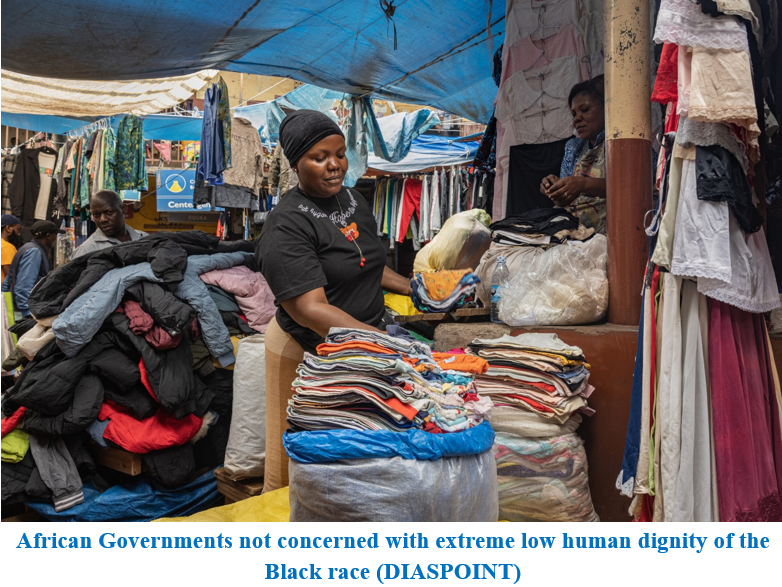East Africa’s second-hand clothes markets – a major source of work for women – are under threat
Post By Diaspoint | May 30, 2024

At Kampala’s sprawling Owino market, Millicent Mukwezi opens up a bundle of second-hand clothes while her assistant keeps an eye on the buyers eagerly rifling through in search of bargains.
Mukwezi buys the clothing from a trader in the Ugandan capital who imports them from the United States and takes them to the market to sell. She favors U.S. clothing because the quality is reliable. The prices are good too – a second-hand Adidas sweatshirt sells for 60,000 Ugandan shillings ($16), a fraction of what a new one would cost.
“My customers return because of the quality we offer,” says Mukwezi. “Here, you can get designer clothes and brands at very reasonable prices.”
Every day, hundreds of shoppers squeeze through the narrow lanes that separate makeshift wooden stalls, eager to grab a bargain. The sprawling Owino market is one of the largest in East Africa, providing livelihoods to an estimated 100,000 people, 70 percent of them women.
Owino is just one of the many markets for secondhand clothing—known locally as mitumba—that exist across East Africa. It’s a trade that allows wealthier, mostly Western countries to export discarded clothing that might otherwise end up in landfills and provides livelihoods for millions of women in the region. The Mitumba Consortium Association of Kenya, a trade body, estimates that 4.9 million people in East Africa make their living from the trade, most of them women.
But the industry faces multiple threats. Some European countries are seeking to restrict exports of used clothes amid claims they are simply exporting an environmental headache to poorer parts of the world because anything that can’t be resold ends up in landfills. Mukwezi confirms this, saying she prefers clothing shipments from the United States because she can sell everything. When she gets shipments from China, she said, “you find you can’t sell half of it. You either have to find a way to dispose of it or give it away—and that’s not good business.”
Read More from original source
